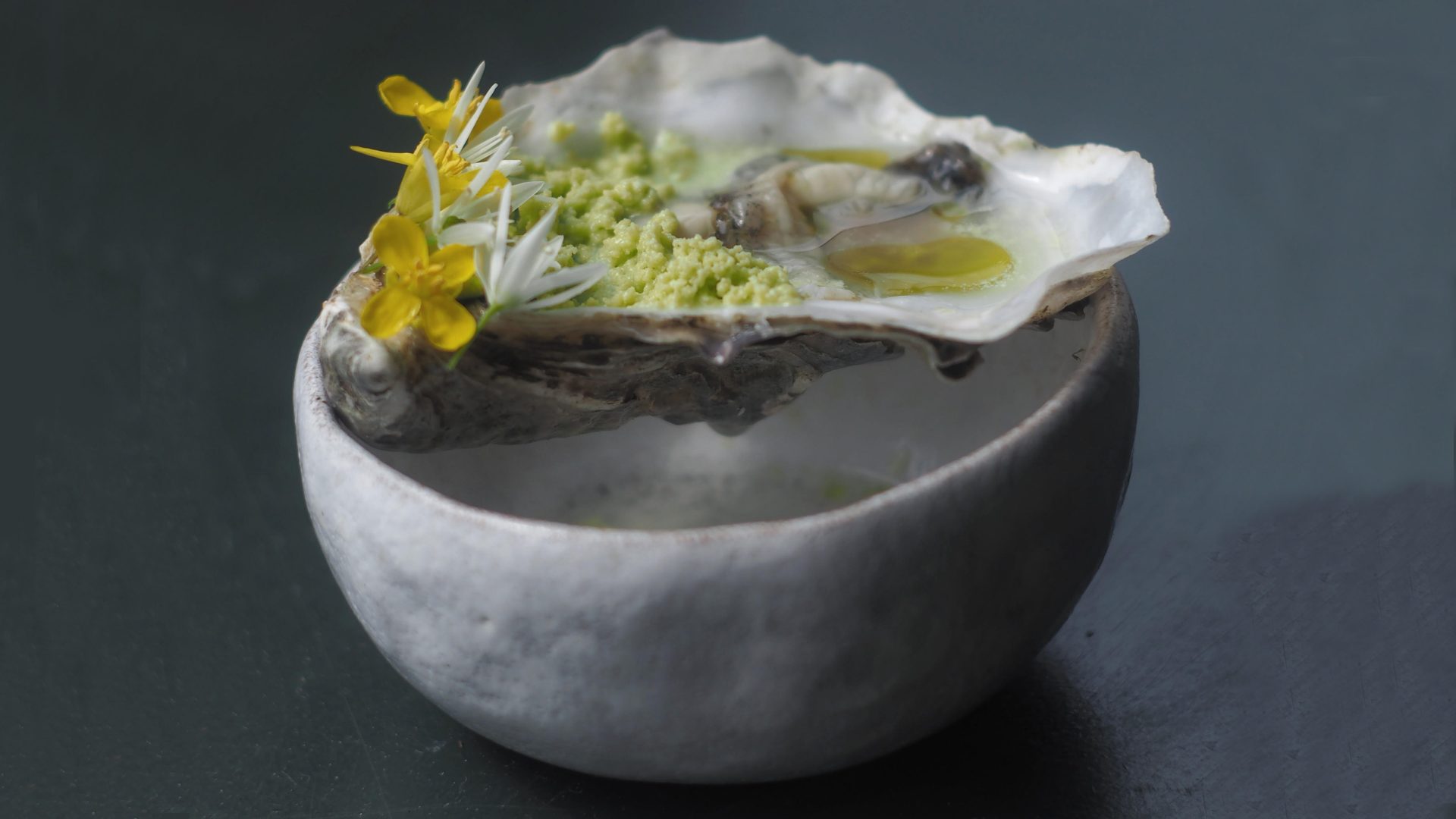About five or six years ago, my mum, stepdad and two sisters, both of whom
are quite a lot like ducklings, moved to Raymond’s Hill, an east Devon settlement just above Lyme Regis in Dorset. It is a bucolic and wholesome
place and the food and drink is fine: out of Lyme Bay come scallops, pearly
crab, plaice and invigorating turbot; there are a wealth of farm shops, including Darts Farm and Greendale, selling good vegetables; farmers inland rear arguably some of the best beef in the world; and Cabrito, perhaps the country’s best-known producer of goat meat, is found in Axminster, an unassuming town tucked into a West Country valley.
It isn’t any wonder that restaurants are plentiful in this part of Britain. Down the road near Exmouth is Michael Caines’ at Lympstone Manor. Mitch Tonks’ group of accessible seafood restaurants, Rockfish, are dotted along the coast and over in Portland, off Weymouth, about 40 minutes’ drive away, is The Crab House Café, an informal spot as unpretentious as it is beguiling. You will no doubt have heard of The River Café, while Mark Hix’s Oyster & Fish
House is a charming spot with an enviable terrace.
And then, round the corner from Hix, also in Lyme Regis, there is Robin Wylde, opened by Harriet Mansell, a local chef. She has appeared on Great
British Menu and now cooks in a small but powerful space at the top of the
hill. It is best to swim in the sea, where the water is almost always calm, before skipping up to Lilac, Harriet’s wine bar, for a glass of natural wine. After this, dinner, with a menu of John Dory, tomato consommé, local lamb and Devonshire strawberries.
Oysters, too, are a consistent and satisfying feature. Harriet is inventive. To match one of these plump bivalves with ice cream is a risky move, not least in the West Country, where locals aren’t always adventurous and tourists are usually after fish and chips. But it works, with precision and thrust, and it might be time for you to try to recreate the dish at home — an appetising taste of Lyme Regis wherever you might be. Tricky, but worthwhile.
PORTLAND PEARL OYSTERS, MUSTARD ICE CREAM AND WOODRUFF OIL
INGREDIENTS:
Pearl Oyster x up to 10
1 lemon, juiced
Sea salt flakes
Woodruff – handful
Light neutral oil, eg sunflower or light olive oil – 1 cup
For the ICE CREAM:
The below is a small yield, you might want to double it as it will be easier to make a slightly larger amount:
Black mustard leaves 200g
2 cups heavy cream
½ cup sugar
½ lemon rind
4 egg yolks
Pinch salt
½ inch piece horseradish grated
METHOD:
Make a custard and then place in an ice cream churner.
Heat cream in a pan.
When hot, add to roughly sliced mustard leaves and horseradish. Blitz until green in a high-powered blender.
Meanwhile, mix yolks with sugar.
Pour hot cream over yolks and sugar and add lemon rind to infuse and whisk together until combined.
Pour mix into a new or clean pan and cook on medium heat while stirring until thickened.
Churn and freeze.
For the WOODRUFF OIL:
Blend woodruff and oil with pinch of salt in a high-powered blender on high speed for 3-4 minutes.
Pass and leave to cool in the fridge.
To garnish:
The yellow flower of the black mustard plant, if you can find it.
For the JUICE:
1 green apple
1 stick celery
½ cucumber
Pinch salt
Handful herb robert (please only pick this if you are absolutely certain – otherwise leave out and consider adding some summery green leaves such as rocket/parsley/chervil instead)
Handful cleavers (please only pick this if you are absolutely certain – otherwise leave out and consider adding some summery green leaves instead)
(We juice the ingredients and then test the seasoning/sweetness level against
the mustard ice cream. If the juice needs some more sweetness, or acidity, we add some rose syrup or rose kombucha that we make in the restaurant. At home, I would suggest tasting to see if it needs a lick of acidity or sweetness, and then adjusting in accordance with your preference. The joy of these fresh ingredients is that they change in flavour throughout the year, and there is really no foolproof recipe we can advise. It’s about testing and adjusting in line with your preference. A useful ingredient to have on standby at home to sweeten might be a dash of elderflower cordial and a
squeeze of lemon juice or live apple cider vinegar. Just make the juice lovely
and light so that without sounding corny, it dances against the mustard ice cream and feels light and herbal and refreshing after the oyster. Have fun
with the ingredients, and know that it is full of goodness – the medicinal
benefits of herb robert and cleavers are potent and powerful.)
TO SERVE:
Portland pearl oyster, freshly shucked.
Squeeze a little lemon juice inside, add a little of the woodruff oil and a pinch of sea salt flakes.
Serve the oyster alongside a little cup or bowl of the juice.




